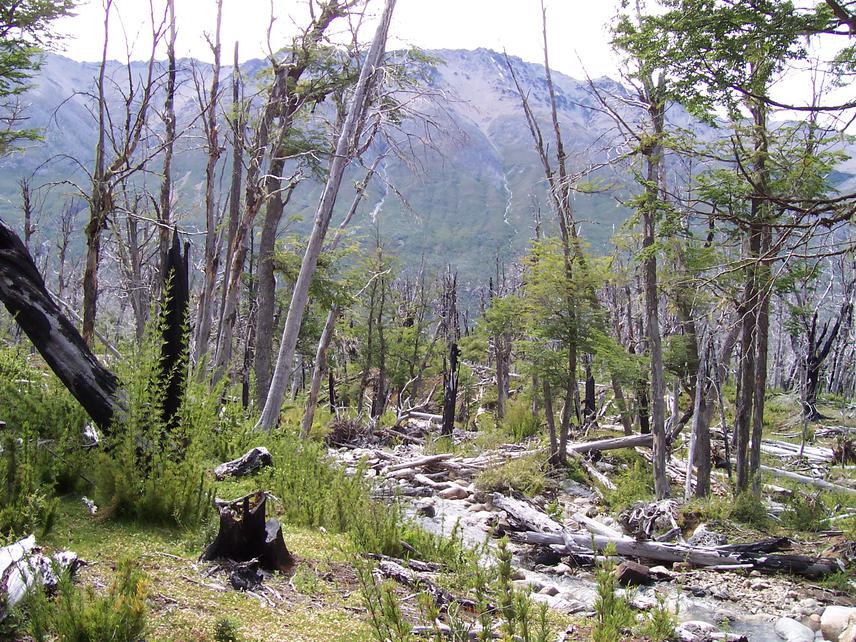Laura Cavallero
My proposal is focussed on the study of the possible role of birds as mediators of ecological restoration of burned areas through sexual reproduction of sprouting species.

Nothofagus forest burned in 1999.
Patagonia’s north-western “matorrals” are the forestlands type communities most affected by disturbances because of different factors: fire, overgrazing and firewood extraction. After fire, many species have the ability of re-sprouting and vegetative multiplication. After re-sprouting, populations maintain the same (or even less) genetic variability that they had before fire. But, recolonization of burned areas by vegetative multiplication can diminish genetic diversity of those populations. This occurs because only those individuals adapted to this disturbance can reproduce vegetatively and generates individuals with the same genotype (clones). Although better adapted genotypes proliferate, populations loose their ability to respond to future disturbances and stochastic climate variations, resulting in drastic consequences to perpetuation of native populations.
In recently burned areas, reproductive fitness is higher, where high availability of light and soil nutrients is found. This situation has great importance because creates opportunities for sexual reproduction. This increases genetic variability, favouring genic flow in between neighbouring populations due to crossed polinisation, seed dispersal, etc. Standing dead trees are used by birds as perching structures in burned areas, increasing seedling recruitment beneath them. In Patagonian National Parks it´s allowed dead standing trees extraction and this may limit natural recolonization of burned areas through sexual reproduction. An important contribution is to know in which moment of the fire cycle, sexual reproduction occurs in these communities, who respond to disturbances by re-sprouting and vegetative multiplication. Furthermore, I wish to determine whether this fact is mediated by mutualist plant-bird interactions.
This study will be an invaluable contribution to the conservation of north-western Patagonia´s “matorrals” because are the native community most affected by anthropic disturbances, due to its forest-urban interface development, increasing its susceptibility to fire incidence, overgrazing, etc. Finding out if dead standing trees serve as perching sites and contribute to postfire recolonization, and knowing patterns and processes that govern ecologic recovery, will contribute to change management policies of National Parks for conservation of biodiversity and ecosystems functions proper of this ecotonal communities.
Finally, this work not only will contribute to the conservation of those ecotonal communities, but also to the conservation of southern temperate forests, because matorrals are buffer communities that favour forest recovery after disturbances.